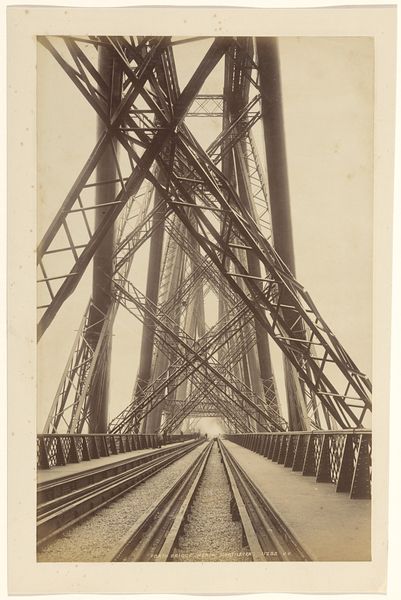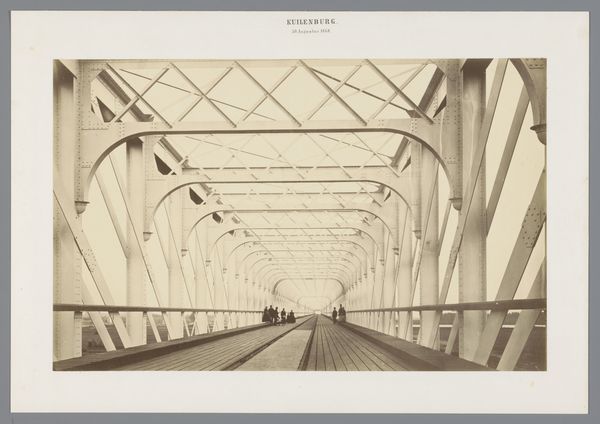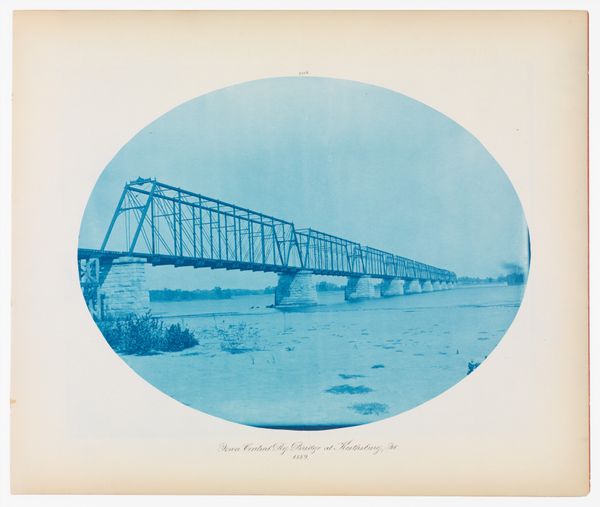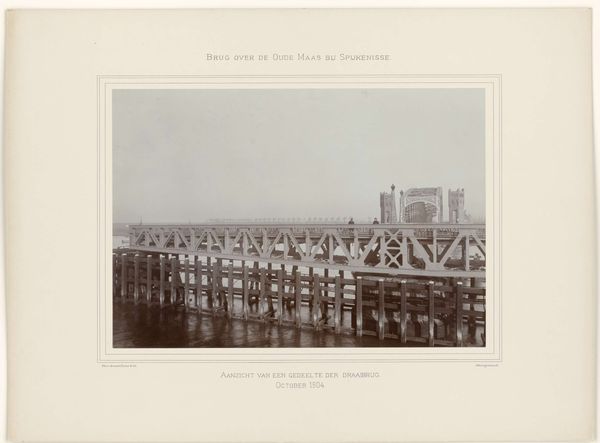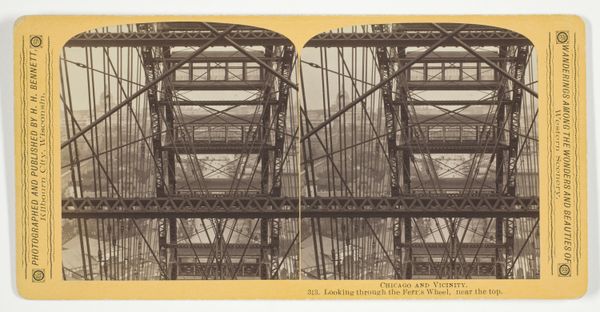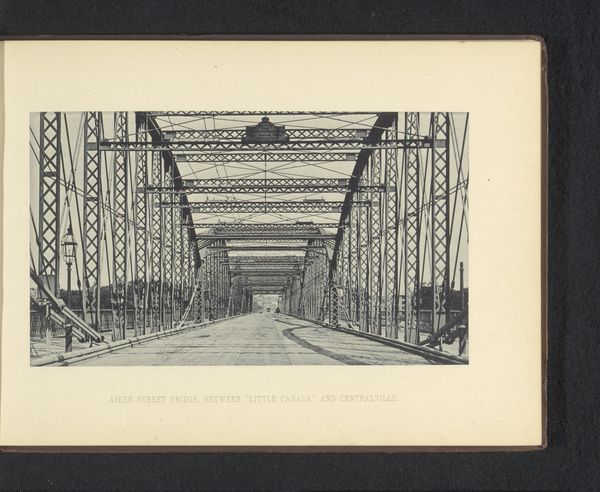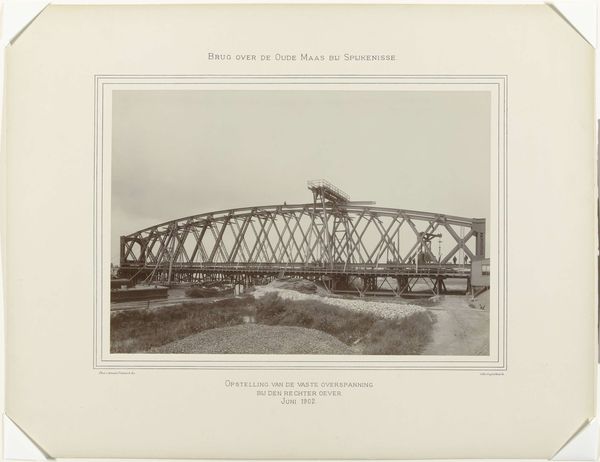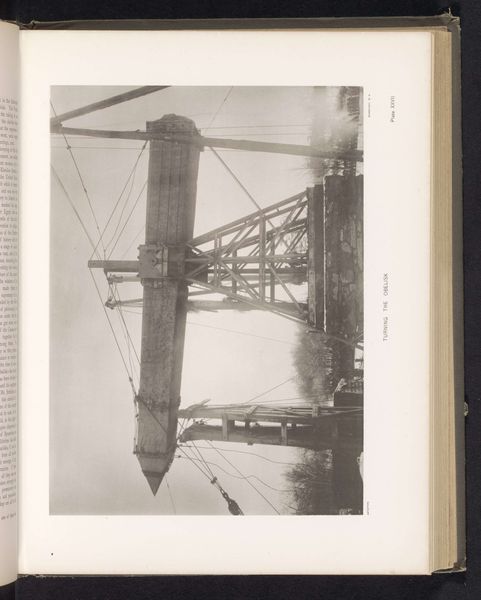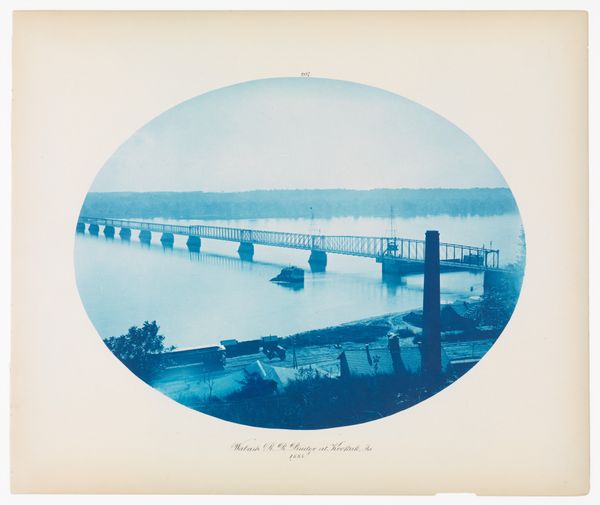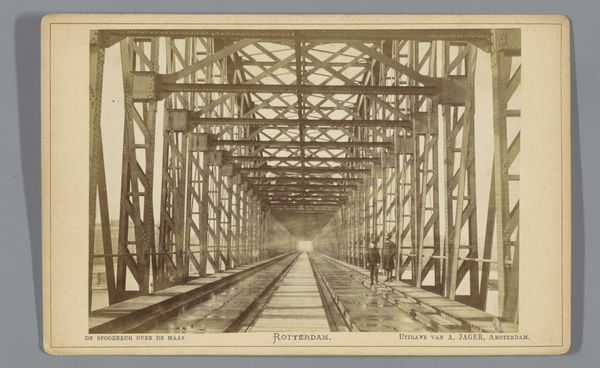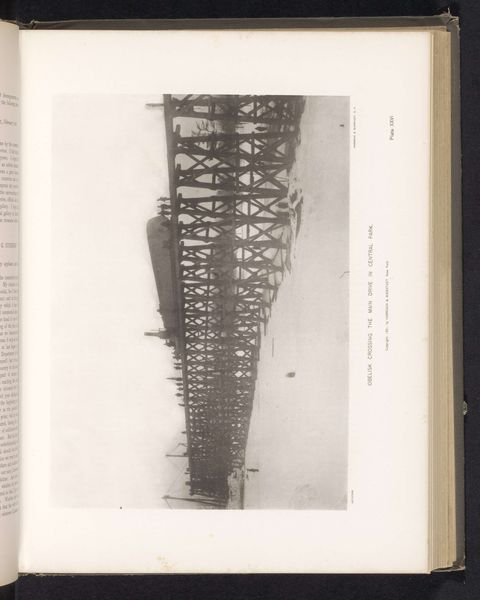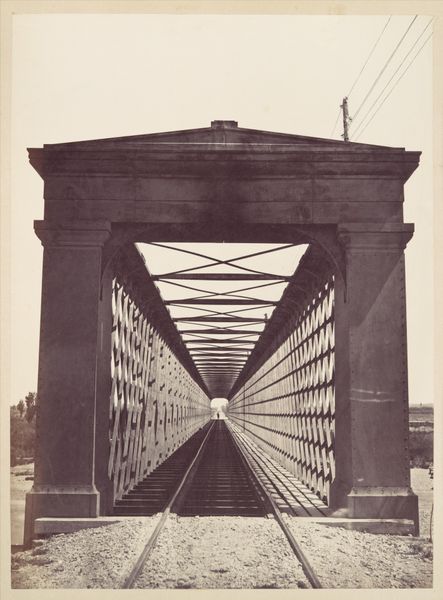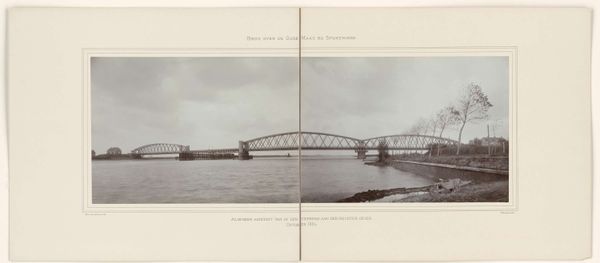
photography
#
landscape
#
photography
#
geometric
#
constructionism
#
realism
Dimensions: height 294 mm, width 420 mm
Copyright: Rijks Museum: Open Domain
Curator: This photograph captures a powerful scene: the "Construction of the Bridge over the Maas River at Spijkenisse," documented between 1902 and 1908 by Arnaud Pistoor & Zoon. Editor: My first impression is the sheer angularity of it. All those crossing metal beams give it such dynamic force, like something under immense tension, straining to hold its shape. Curator: Indeed. And thinking about it in the context of the period, these infrastructural projects were about shaping national identity and power through engineering prowess. Photography itself was undergoing a technological revolution. This picture represents this historical confidence of the state in material and production. Editor: The muted sepia tones underscore that this is a photograph documenting a significant construction feat of its era. The resolution is impressive; you can practically count the rivets. It also speaks volumes about labor conditions, as men manually work this huge metallic web, revealing social context through physical exertion and danger. Curator: Precisely. Note how the linear perspective draws your eye across the span towards the far bank, symbolically linking two places, integrating populations through material networks. It also signifies advancements in both steel manufacturing and concrete foundations. Editor: While seemingly objective, the viewpoint elevates industrial progress. Where would it have been without manual input though? What about workers' welfare? It's an undeniably impactful, historically rich piece; the geometry suggests it wants to create its space as monumental but its humble materials expose real working challenges in its construction. Curator: The very act of documenting the bridge's construction transforms it into a historical artefact that serves as social commentary, not only celebrating but perhaps tacitly questioning that human costs accompany technological advancement. Editor: Exactly. That interplay between material processes and human activity continues to give the photograph its resonant power more than a century later. Curator: Thank you, this conversation shifted how I look at industrial photographs— I really considered their capacity to reflect social power structures in subtle ways. Editor: Absolutely! Investigating through its textures reveals how an artefact of iron construction echoes human stories.
Comments
rijksmuseum about 2 years ago
⋮
The Netherlands is a delta: the railway, motorways, and bridges link regions separated by water. Photographers recorded these kinds of building projects because it was required by law and because they afforded such a marvellous spectacle. Pistoor planted the tripod of his gigantic camera on one side of the bridge, looking straight at the vanishing point on the opposite side. The glass negative was as large as this photograph, which is why it is so sharp.
Join the conversation
Join millions of artists and users on Artera today and experience the ultimate creative platform.
